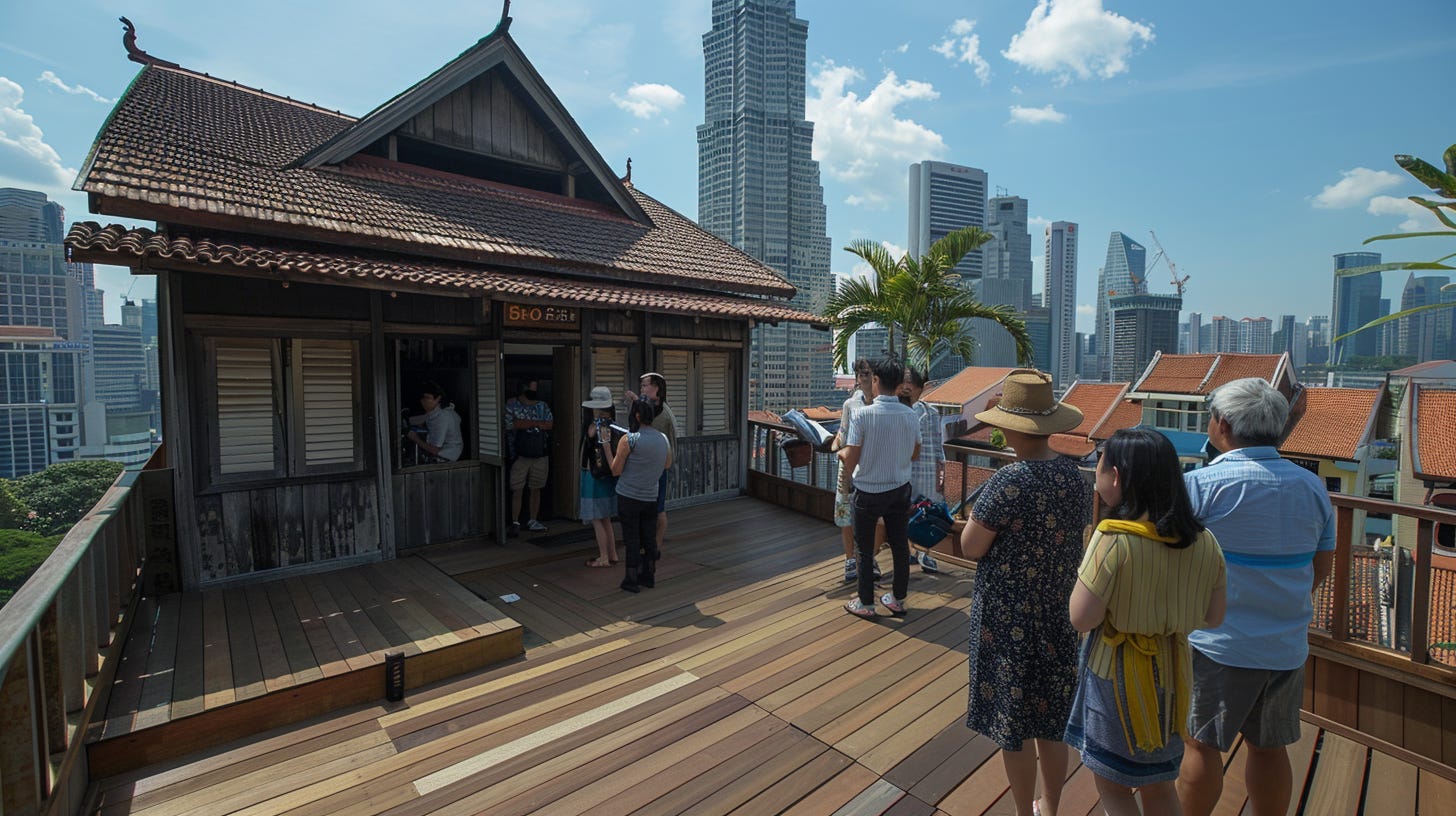Kuala Lumpur Skyscrapers Now Feature Traditional Kampung Houses on Rooftops
KUALA LUMPUR – Several skyscrapers in Kuala Lumpur have adopted a novel approach to integrate traditional Malaysian culture with modern architecture by placing traditional kampung houses on their rooftops. This move has caught the attention of both locals and international observers, sparking a debate about the blending of old and new.
This is part of an initiative spearheaded by the Malaysian Urban Heritage Council (MUHC). The council's vision is to preserve the cultural heritage of Malaysia while accommodating the rapid urbanization that Kuala Lumpur has experienced over the past few decades. Traditional kampung houses, known for their wooden structures, stilts, and thatched roofs, now sit atop some of the city's tallest and most iconic buildings, offering a stark contrast to the sleek, glass-fronted facades of contemporary high-rises.
According to Dato' Sri Amirul Hakim, Chairman of the MUHC, "This initiative aims to remind us of our roots and heritage, even as we strive towards modernization. By placing kampung houses on skyscrapers, we create a visual and symbolic reminder of our cultural identity."
The reaction from the community has been mixed. Some Kuala Lumpur residents have expressed delight and pride in seeing elements of their traditional culture prominently displayed in the city skyline. "It's a beautiful juxtaposition," said Aisha Kamal, a local architect. "It shows that we can honor our past while embracing the future."
However, not everyone is thrilled. Critics argue that the placement of kampung houses on skyscrapers is more of a gimmick than a meaningful preservation effort. "It's an interesting idea, but it doesn't address the real issues of heritage conservation," said Dr. Lim Wei Cheng, a historian at the University of Malaya. "True preservation means maintaining these houses in their natural environments, not displacing them to the tops of modern buildings."
Economically, the initiative has had a surprising impact. Tourists are flocking to Kuala Lumpur to experience this unique blend of architecture, boosting local businesses and the tourism sector. Rooftop tours of these kampung houses have become a popular attraction, providing visitors with stunning panoramic views of the city along with a taste of traditional Malaysian culture.
The integration of kampung houses on skyscraper rooftops presented significant engineering challenges. Traditional kampung houses are designed to be lightweight and adaptable to the rural landscapes and climates they originate from. Adapting these structures to withstand the high winds and different environmental conditions atop urban skyscrapers required innovative solutions.
Architects and engineers collaborated closely to reinforce the traditional materials without compromising their authentic appearance. "We used advanced lightweight composites to replicate the look and feel of traditional wood and thatch, while ensuring durability and safety," explained Ir. Zainal Arifin, the lead engineer on the project. "Additionally, we had to account for structural support and wind resistance to prevent any potential hazards."
The success of this initiative has sparked interest from other cities around the world looking to incorporate cultural heritage into urban development. Delegations from cities such as Bangkok, Jakarta, and even New York have visited Kuala Lumpur to study the feasibility and impact of this unique approach. The MUHC is now considering partnerships with international urban development councils to share their expertise and expand the concept globally.
In Kuala Lumpur, the MUHC is planning to expand the initiative to include more skyscrapers and even other forms of traditional architecture, such as Chinese shophouses and Indian temples. "This is just the beginning," said Dato' Sri Amirul Hakim. "We envision a city where the past and present coexist harmoniously, creating a unique and vibrant urban landscape that honors all aspects of our rich cultural heritage."



